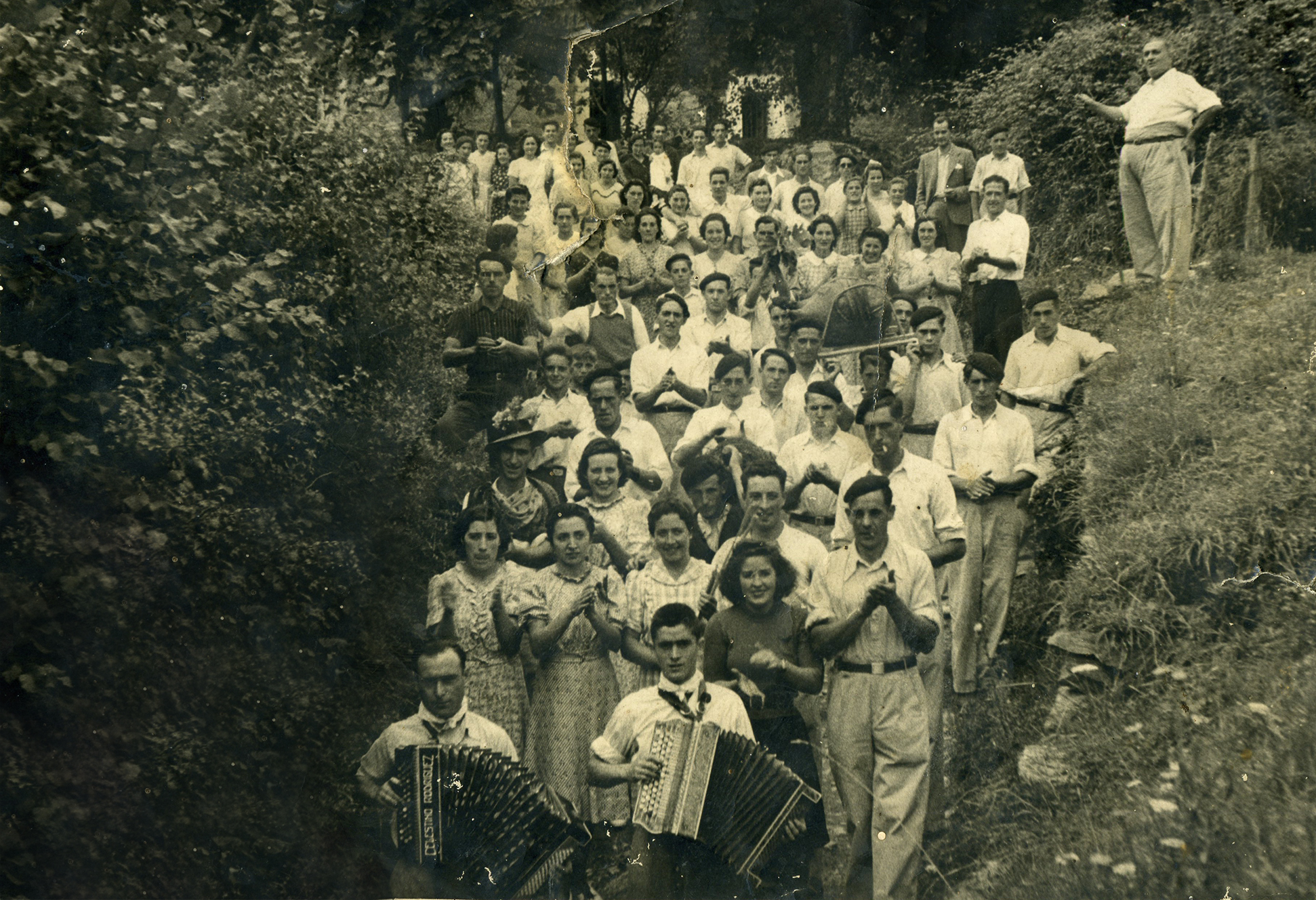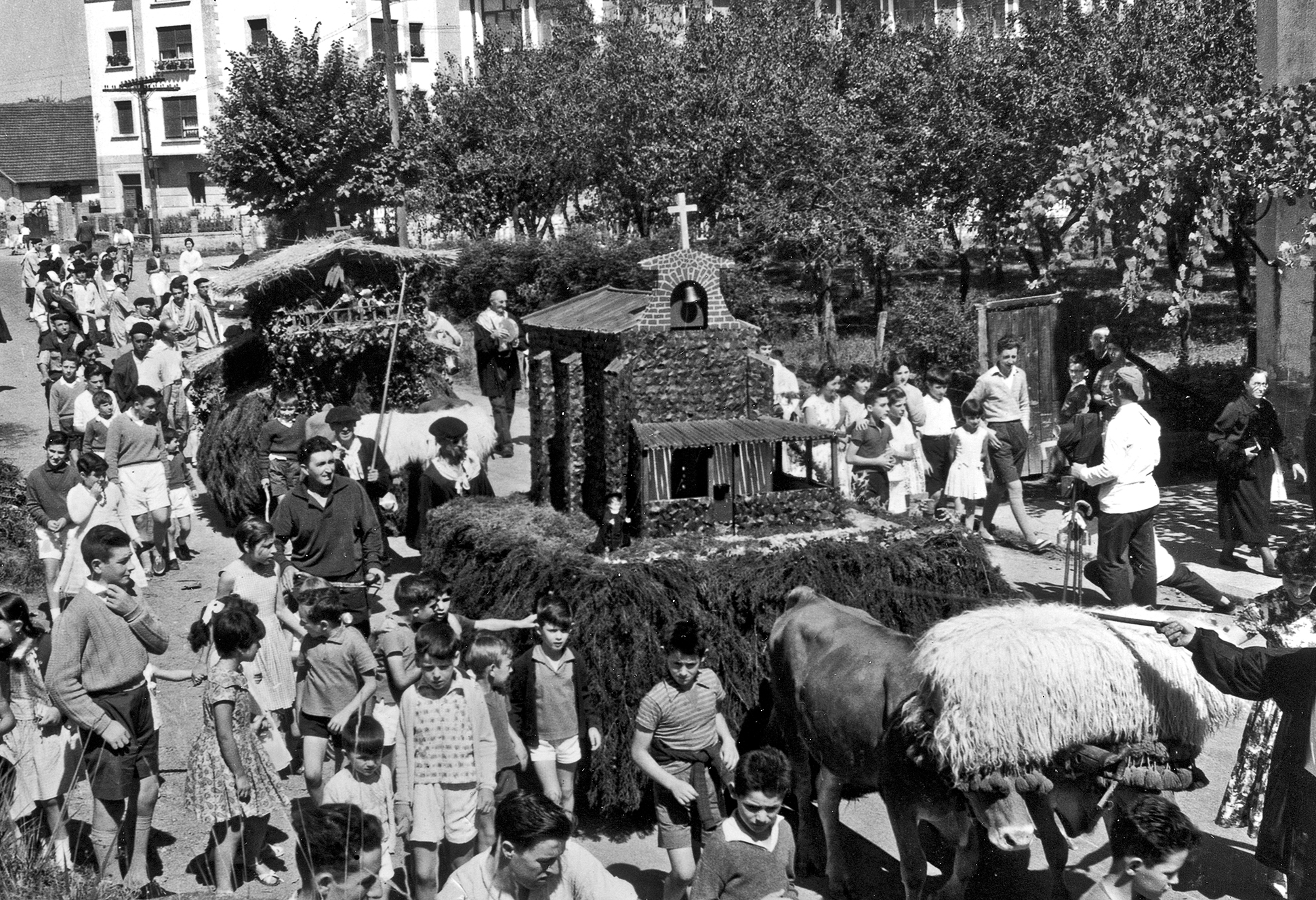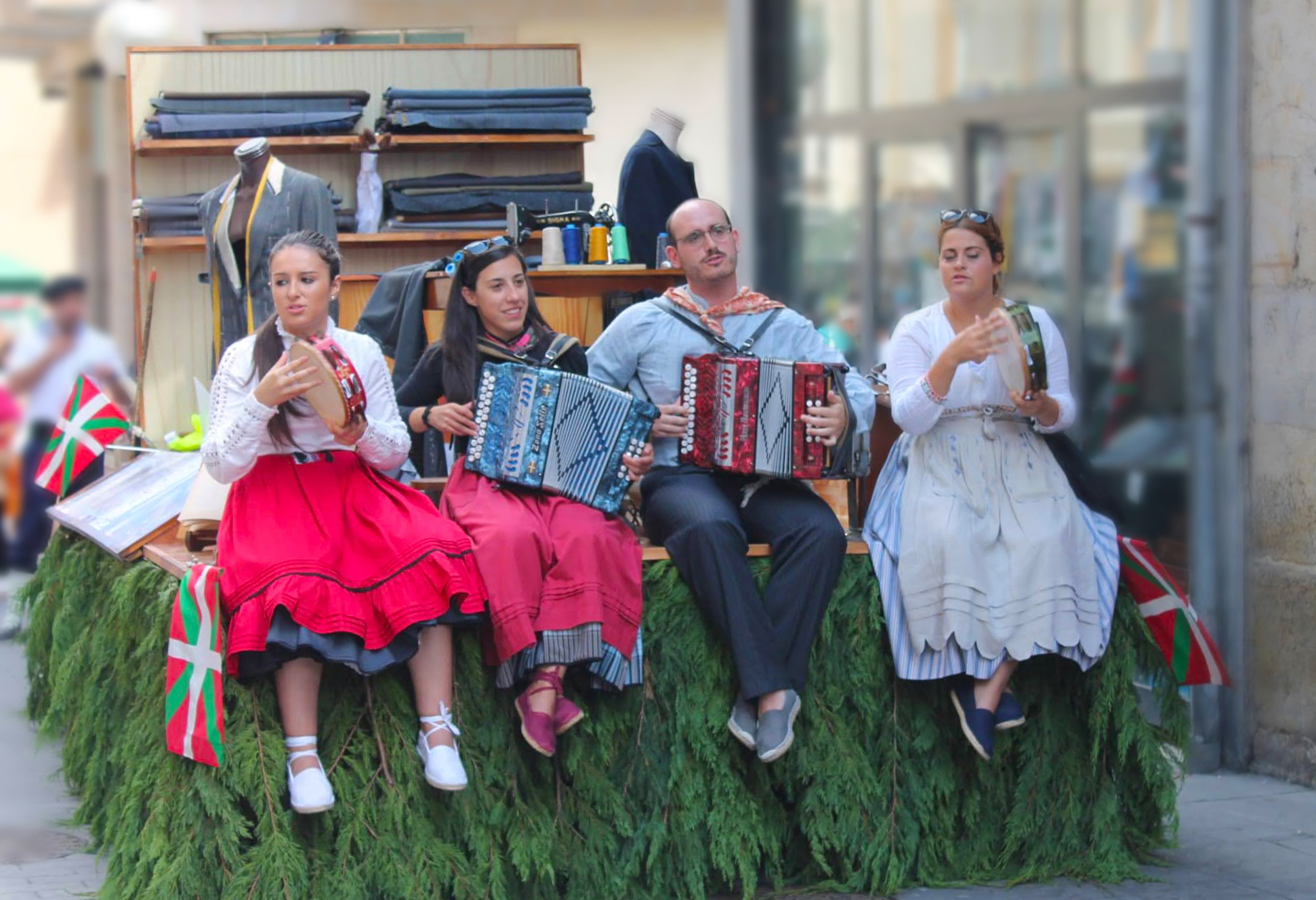Basque ethnography at a glance
Summer is prime time for the celebration of patron saint festivities, along with local festivals in neighbourhoods and at hermitages. In the old days, and until just a few decades ago, such events would be customarily organized by informal groups of youth.
As a matter of fact, we would like to take this opportunity to recall a tradition, once common in many localities of Bizkaia but which disappeared during the civil war: namely, that of the so-called zaragi-mutilak ‘lads of the wineskin’. Indeed, a group of youth, known as eskota in the region of Uribealdea, would share the cost of a full wineskin for drinking and feasting. Most notably observed in the municipality of Mungia, particularly in the neighbourhoods of Atxuri, Belako, Billela, Elgezabal, Iturribaltzaga, Laukariz, Markaida and Trobika, the custom persisted until the mid-20th century. Practically lost today, barely survives, being partly maintained, only in the neighbourhoods of Atxuri and Trobika.
The feast would usually be celebrated on a Sunday. Lads from each neighbourhood who were over the age of majority gathered together for the occasion. They entered the group as soon as they turned eighteen and belonged in it until they married.
Lads would dress accordingly for the big day, wearing blue nankeens, a white shirt, a loose overshirt, a flowered scarf around the neck, and a straw hat adorned with ribbons and flowers. They prepared an ox-cart, embellishing it with branches and flowers, and marched to the city centre with it. Some of them made large models, representing the local hermitage, a farmhouse, a mill… The lasses of the neighbourhood would also join them, far on in time.
In a festive atmosphere, they paraded to the sound of accordions and tambourines, or txistus and tambours. And there would be no shortage of rockets, or bolanderak, to announce their presence.
Once in Mungia, they would head for the grain exchange to buy a wineskin, or zaragia, for celebrating. Equally divided, all expenses were covered by the young men themselves, paying them out of their own pocket, hence the name eskota, ‘shot, one’s share or contribution’.
The youth would then make their way go to the city asylum and present residents with a demijohn of wine, a little money, and other gifts. And they would likewise perform a couple of dances.
Back in the neighbourhood, the contents of the large wineskin were poured into smaller wineskins and distributed among attendees. It was an invitation made by the young members of the community to their fellow neighbours.
Accounts were made the following Sunday, specifying the amount contributed by each member. They returned to the grain exchange to pay what was due and later enjoyed a drink and bite to eat in a tavern.
Although the cart is no longer drawn by oxen, neighbours of Atxuri still craft beautiful models, featuring representative motifs of their neighbourhood.
Akaitze Kamiruaga – Cultural Popular Heritage Department – Labayru Fundazioa
Translated by Jaione Bilbao – Ethnography Department – Labayru Fundazioa
Information obtained from fieldwork done by the author in Mungia (Bizkaia) in 2011. The fruit of the mentioned research was published in the work Mungia: bizimodua eta ohiturak [Mungia: life and traditions]. Mungiako Udala – Labayru Ikastegia, 2012.
Further information is available in Josu Larrinaga’s “Model Perspectives of Festive Groups in Bizkaia” in Zainak. Cuadernos de Antropología-Etnografía [Notes on Anthropology-Ethnography]. Fiestas, rituales e identidades.[Festivities, rituals and identities], n. 26. 2006, pp. 101-119.





